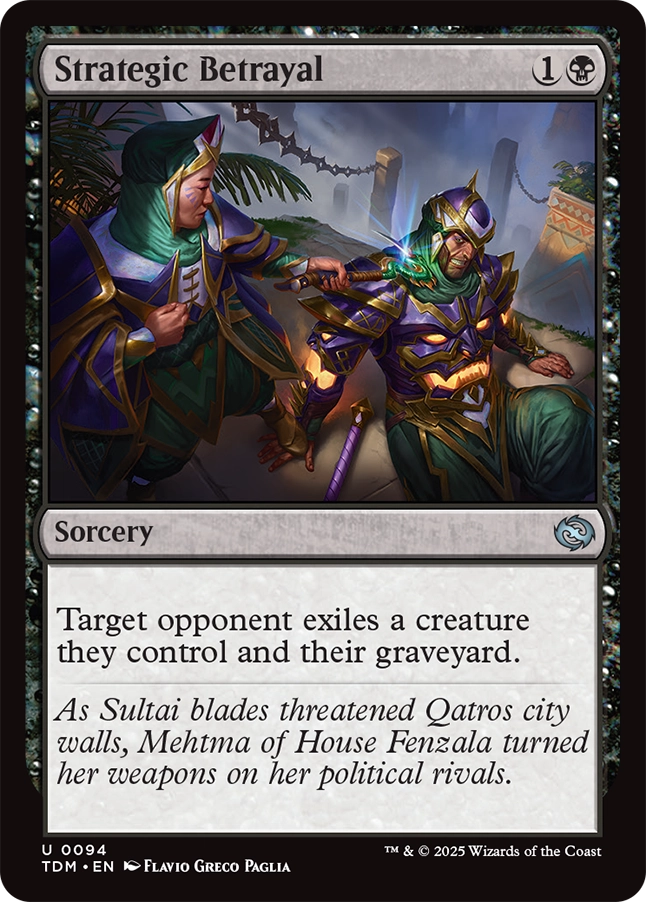The Why of Mono-Black
Whenever I'm in a Magic community or social gathering place and I start explaining Mono-Black card choices or deckbuilding strategies or its place in the meta, I always get asked the same question:
"Why do you willingly choose to play Mono-Black when it seems like there's so many better options?"
It's a valid question, and one I often forget I need to answer. I forget that people usually look at a deck with a strict lens of power-level: if it's not top tier, that must mean it's bad for some reason. Competitive players should only play the strongest deck, right?
But things are rarely that black and white (pun intended). There's a reason we have tiers beyond S (or 1, depending on your ranking structures). There's a reason--many reasons, actually--that despite the fact that some deck may be the strongest in any given meta, not everyone's playing it. In fact, most format-health metrics tend to suggest that, if any given deck is being played too much, it's considered too strong. In an ideal meta, there would be a variety of decks being played.
The trick is to remember that when we say some deck is "the best deck in the room", we're implicitly aggregating a bunch of games across different players down to an average. If we imagine all the games played with X Deck in a database, our query to determine its power level would be a collection of aggregate measures (average win rate, total number of games played, number of pilots, etc). The best deck tends to be the deck with the highest win rate across the most games played. Sometimes this is an obvious choice--Rakdos Midrange before Fable, Invoke, and Bankbuster were banned. But sometimes finding this deck isn't that easy. At current writing, Domain Ramp is generally considered to be the best deck... but that deck actually loses all the time.
Magic is a game of variance, both during the actual match and during the deckbuilding process. We build our decks and play our games to put ourselves in the position with the highest possibility of winning. But winning is just that: a possibility. There is always a chance we'll draw six lands in a row instead of a single threat of many that would win the game. There's a chance the opponent will topdeck Sunfall the turn before we're about to kill them. There's a chance that, in our deck full of ramp spells, we only draw payoffs and get run over by Mono-Red.
So if we understand that even the best deck in the room is going to have a winrate that is nowhere near 100% (or even 75%), we have to then concede that choosing a deck is way more about personal preference and meta prediction than raw winrate or numbers.
If I expect a format to be chock-full of slow, bloated ramp decks, playing a lean, quick aggro deck will be the best choice. If we take it further and realize the format's overrun by lean aggro decks, then a grindy, resilient midrange deck will win the day. And if I expect the format to be full of grindy, value-oriented midrange decks, than a ramp deck that overtakes them will get me to the top. Metagame prediction is perhaps the greatest input in choosing what deck to play.
And I will contend that, in the modern world, there is no better deck to spike a metagame prediction than Mono-Black.
It wasn't always this way. When I first started playing Mono-Black, it was a devotion aggro/midrange deck focused on playing efficient threats like Pack Rat and Desecration Demon before closing the game with a big Gray Merchant of Asphodel. It was powerful, but very one-note. That's changed. With the benefit of color-pie bleed and raw powercreep, black is actually, in my opinion, the most flexible color in terms of answers. You have solid sweepers, lifegain, and big creatures against aggro, you have plenty of value for other midrange decks, you have sticky threats and disruption for control and ramp. Black also has the most flexible instant-speed removal--and has the ability to take care of noncreature permanents thanks to hand disruption. It has value creatures, incredible planeswalkers, evasive attackers, enchantments, grind, direct damage... the list goes on and on. The blessing and curse of Black is that it does so much.
The only issue is that, because it does so much, none of its cards (in a vacuum) are as strong as specialized versions in other colors. Black will never have as good of disruption or card draw as blue, as good creatures as green, as fast aggro or burn as red, or as efficient boardwipes and noncreature removal as white. All of its cards will, on an individual basis, be outclassed by those in other colors.
But Black has a little of everything, which means black can compete in any format.
First and foremost, I play Mono-Black because I love the aesthetic. The concept of greatness at any cost, of paying the price for power and wins, I love it all. I play Mono-Black because it reminds me of when I first got into Magic more than a decade ago with a black Exalted starter deck.
But most of all, I choose to play Mono-Black, over and over again, because no matter what, I will always have a way to slip through my opponent's defenses and take it all, and there isn't a thing they can do to stop it.
I hope you will too.



Comments
Post a Comment